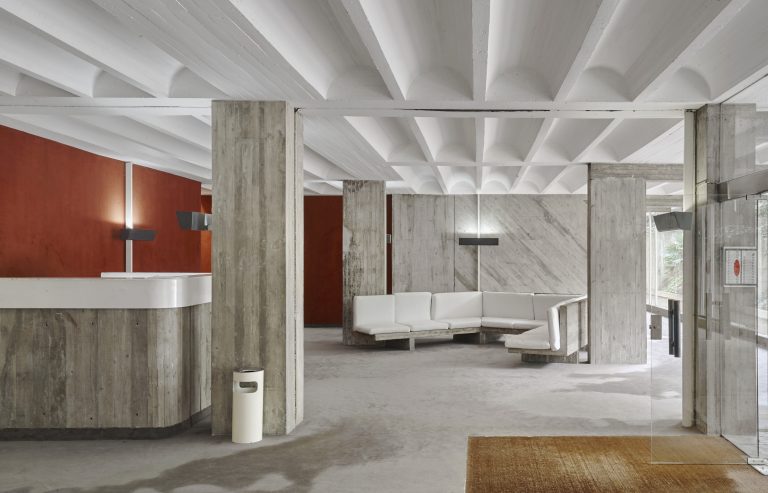The Old Age Pension and Savings Fund acquired the site of a pre-existing factory and commissioned its demolition to promote, years later, the construction of housing under the state Housing Law. In 1966, it commissioned the project to three architects who had never collaborated together. The architects developed a prior Urban Planning figure to establish the building conditions necessary for the execution of the planned project. They had studied more compact proposals for a closed block and other modalities that they discarded.
The project is structured in nine buildings, all of them oriented practically north south, with a slight inclination towards the east, which completely broke the alignment of the Pons Plan of the environment. It contains three towers up to twelve stories high that act as a screen in front of National Highway II. The rest of the buildings, with a ground floor and two or three floors, are located in the part close to the ground and upper floor buildings that predominate in this neighbourhood.
Thus, two absolutely differentiated areas. Among them, a series of socialisation spaces were introduced, with the aim of facilitating meetings between neighbours, also freeing up some ground floor spaces, through porches that connect streets or through closed spaces for community use.
The free space of the complex is an essential part of the project. The residential complex is structured around a central plaza that is divided into two levels that give access to all the blocks. Access to the complex is through two pedestrian paths that connect with the perimeter street belt. In addition to the central square and the adjacent streets, the complex has four elevated walkways that form a third level of relationship, located 2.80 m above the level of the low blocks.
The Can Mercader residential complex is distributed in six types of housing modulated according to a bay of 7.70 m in the upper blocks and 8.50 m in the lower ones. There is a clear intention to introduce variations in terms of distributions, the number of rooms – three or four in the high blocks and four or five in the low blocks –, definition of façades, through the introduction of displacements both in height and in plant, which guarantee the permeability of the complex despite the height of the blocks. On the ground floor, the movements help to provide privacy to the terraces.
The homes consist of kitchen, open gallery, dining room-living room, toilet, bathroom, a double room, two to four single rooms, terrace associated with the living room and, in some cases, the room next to it. With this typological variety, the architects offer the possibility of accommodating families of up to eight people in the same home or even ten, something very common at that time that Barba Corsini already proposed in his Mitre housing project in Barcelona.




















































































